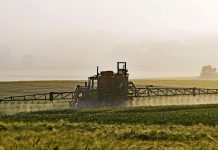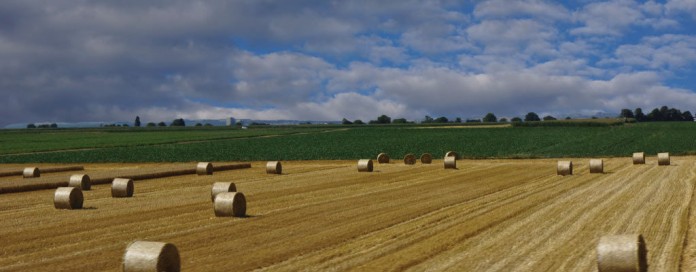When it comes to the weather, where do you get your forecast?
Some farmers may casually open The Weather Channel app on their iPhones, scroll through the detailed forecast and decide if its a good day to cut hay or not, depending on the humidity and the chance of rain. Others may inform their decisions based on past seasons and farmers almanacs.
Here are six weather resources that farmers can consult when they need to know precipitation estimates, soil temperature and other weather conditions.
National Oceanic and Atmospheric Administration (NOAA)
The National Oceanic and Atmospheric Administration is a scientific agency within the United States Department of Commerce. The agency provides daily weather forecasts and severe storm warnings, plus climate prediction, drought information and other vital data for farmers.
National Weather Service
The National Weather Service offers U.S. Daily Soil Temperature reports.
These reports are compiled by measuring data in 50 locations across the continental United States, including stations in Massachusetts, Louisiana, Indiana and Oklahoma. The number of reporting locations may vary by day, but the data is updated within 12 hours.
NWS also offers pan evaporation reports from 100 locations, daily precipitation reports from over 10,000 stations, snow reports from 1,500 locations and air temperature reports, which are recorded in over 5,000 locations.
U.S. Climate Prediction Center
The U.S. Climate Prediction Center provides drought monitoring data from the Palmer Drought Severity Index map and the Crop Moisture Map. Data is available back to 1998.
The Drought Severity Index and Index Percentiles are updated weekly and shows data for the continental U.S. The Drought Severity Index and Index Percentiles are available for climate divisions, and the the Index Percentiles are available by state. There is also a map that shows how much precipitation is needed to bring the Palmer Drought Index to -0.5, which is considered in the near normal range.
The Current Crop Moisture Index is available for climate divisions. Topsoil and soil moisture maps are also provided by the Climate Prediction Center.
These tools can be found here.
Ohio State University Extension’s Agronomic Crops Network
If you live in Ohio, OSU Extension’s OARDC will be helpful. It provides current weather conditions from 14 locations across the state. The time of the data collection is given for each location, and the data is generally available after 6 a.m. daily.
Soil temperatures at depths of 5 cm and 10 cm are given, as well as solar radiation, scalar wind speed, wind direction, standard deviation of wind direction and leaf wetness are available.
Other weather conditions, such as precipitation amounts, temperature and humidity are provided. Another tool available on the OARDC website is the growing degree-day (GDD) calculation, which allows farmers to input minimum and maximum temperatures and the desired year for one of the stations. The resulting data shows growing units for that range of temperatures for the chosen year.
Wolfram|Alpha
Though not solely for weather, Wolfram|Alpha is a storehouse of information. If you want to look at historical weather, type in the month, date, year and your location to discover the temperature, humidity, conditions, wind as well as hour-by-hour statistics for temperature, cloud cover, conditions, humidity, wind speed, and sunlight intensity for the specified date.
Forecast.io
Forecast.io allows users to input their exact location. Otherwise, it’s much like a normal weather reporting service. The usual data are available: temperature, precipitation totals, current and forecasted conditions, wind, humidity, dew point, visibility and pressure. One feature of Forecast.io is a visual display of what to expect hourly for the following 12 hour period.










